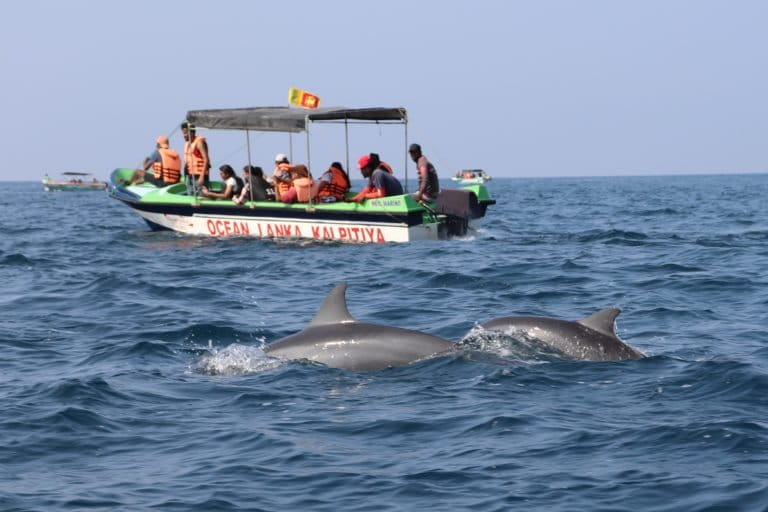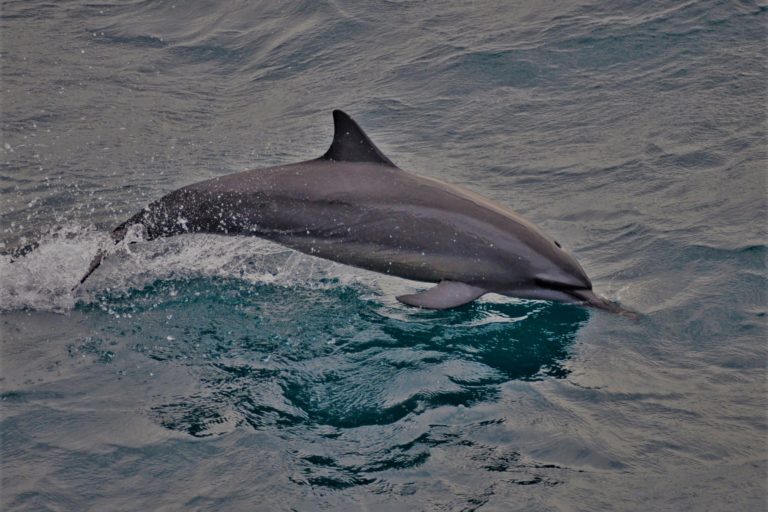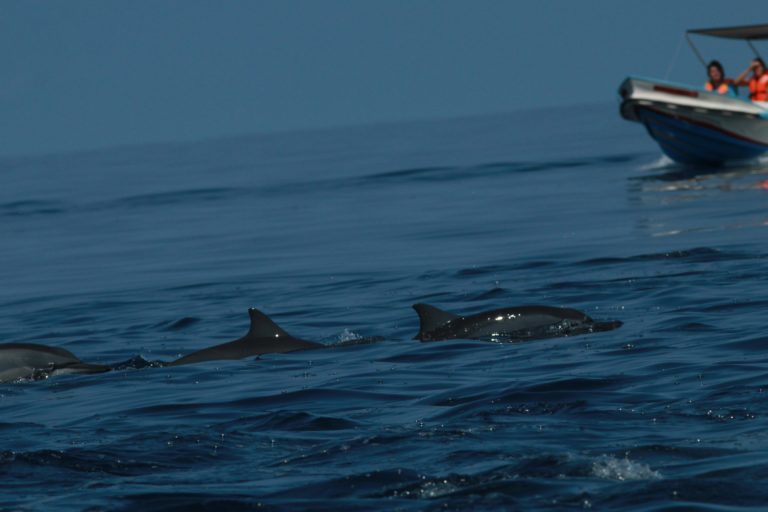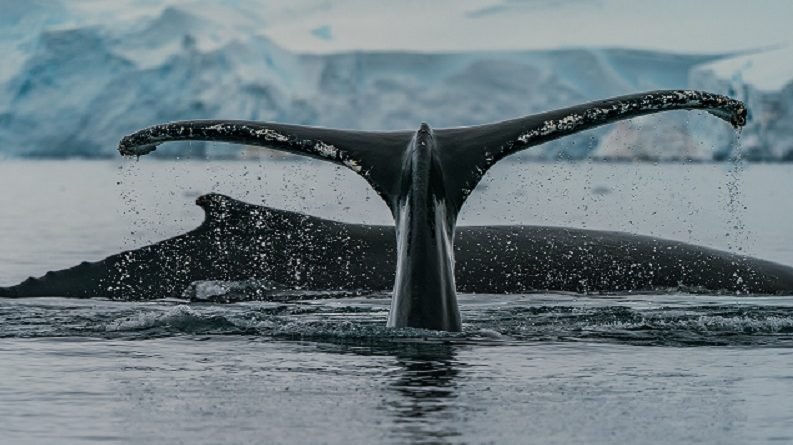Sri Lanka’s whale watching market should have to be responsible; if needs to be improved
By Mongabay. Commentary by Ranil P. Nanayakkara
- Whale watching in Sri Lanka picked up in 2005, and the end of the civil war in 2009 ensured wider access to some of the finest coastal beaches in the Indian Ocean island.
- Expeditions that highlighted Sri Lanka as one of the top whale-watching destinations sparked an ever-expanding industry, giving rise to concerns about irresponsible public conduct and the need to minimize harm to marine mammals.
- In response, awareness-raising initiatives are being taken by various groups with emphasis on responsible whale watching according to existing guidelines and codes of conduct.
- This post is a commentary. The views expressed are those of the author, not necessarily Mongabay.
In the early 1990s, whale watching opportunities in Sri Lanka were few and far between as both opportunity and access were rare.
Whale watching requires both whales and whale watchers, such as tourists, naturalists and so on, to be within viewing distance of one another. Capturing whales and holding them in marine parks is one way of doing it, but this raises serious ethical concerns and also deprives participants of the unmatched experience of seeing animals in the wild. So it is the watchers who should actively go in search of their quarry.
This idea may immediately conjure up the vision of an intrepid yet seasick landlubber clutching a sopping camera on a bucking, spray-tossed vessel with land a distant memory. But the experience of watching whales in all their glory and their natural setting is incomparable.
Whale watching isn’t just about watching these large marine mammals in their habitat: the wider and realistic meaning is “cetacean watching.” Cetaceans are a collective group of air-breathing, warm-blooded mammals that include whales and their close relatives such as dolphins and porpoises. But because the earliest cetacean-watching tours were focused on seeing whales, the term “whale watching” has stuck.

Whale-watching expeditions
Cetaceans, contrary to the popular perception, are surprisingly widespread, common and easy to see.
They visit or live along most of the world’s coastlines, they come close to shore, many are not at all shy of boats, and most, as we shall describe, are spectacular to watch.
There is a growing interest in watching whales among tourists, naturalists and enthusiasts, and add the locals, you get the “typical” group, choosing their pleasure activities. With increasing global interest in observing these large marine mammals, new opportunities are being created by various groups.

Conversely, without that demand, fishermen, retired mariners and local/foreign entrepreneurs won’t invest their capital in boats, licenses, safety equipment, guides, merchandise and other paraphernalia required to make a living from the activity. This lack of demand and lack of opportunity forms a vicious circle. As a consequence, the vast resources of whale watching remained untapped until very recently, when a few adventurous people and a few chance events got the ball rolling.
Today, whale watching is a popular global activity and generates approximately $2 billion a year, supported by an industry of professional operators, guides and support staff. Whale-watching companies large and small operate in more than 87 countries, from the U.S. to Sri Lanka, the Spanish Azores to Iceland to New Zealand — a pleasure pursuit common to both the developed and the developing world.

Whale watching in Sri Lanka
Modern whale watching in Sri Lanka began in the early 1980s in Sri Lanka’s picturesque eastern coast, in Trincomalee to be precise, with the sperm whale. These mammals are found throughout these waters beyond the 1000m isobath. The best-known populations in the island are found in the eastern and northwestern coastal belts.
From 1983-1984, a research vessel called the Tulip, supported by WWF Netherlands, visited Sri Lanka to study sperm whales with some of the world’s most eminent marine biologists on board. The expedition was the first comprehensive study of sperm whales that had ever been conducted using benign techniques, and was also the first occasion on which human beings swam side by side with sperm whales and blue whales.
The success of the Tulip expedition reached beyond Sri Lankan shores thanks to two popular documentary films by Jim Donaldson: Whales Weep Not and Shadows and Footprints. This sparked global interest, and soon Sri Lanka was viewed as a whale-watching hotspot. However, the outbreak of a violent conflict between the Sri Lankan government and the rebel Liberation Tigers of Tamil Ealam (LTTE) diminished opportunities for international travelers to reach the island’s fabled eastern shores in search of whales. Eventually, whale watching in Sri Lanka died a natural death.

In 2005, Mirissa, a small coastal town in southern Sri Lanka suddenly began grabbing headlines as a whale-watching hotspot and an ideal location to view blue whales. It didn’t take too long for local and foreign tourists to start paying a few thousand rupees for a boat ride for an awe-inspiring experience to see the largest animal in the world, the blue whale, or the yo-yo of the ocean, the mighty sperm whale. As Mirissa was ranked among the world’s top 10 destinations for whale watching, and the number of people going to see whales grew, so did the fledgling industry, leading to an increase in the number of boats, boat operators, and even the shape and size of these boats.
Ostensibly, whale watching appears to be an innocuous activity. Watching whales is a pursuit of observation, and to view the mammals, one should be in close proximity. If this is such a harmless activity, how do whale-watching boats pose a particular problem?
Sound can travel long distances, and if boats that target whales and dolphins for viewing hour after hour, day after day, in close proximity to the animals, this will expose the mammals to noise pollution at the highest levels of intensity. In doing so, they will mask all other noises that cetaceans find so important. Imagine the risk: It would be very similar to a top predator in a terrestrial national park being hounded by a smoke machine from dawn until dusk.

Watching how we watch
The impact of noise pollution in cetaceans is largely unknown. There are recorded instances of whales moving farther out to sea where whale watching has been particularly intense, and of animals changing their behavior when boats are nearby, such as from foraging to social activity to resting.
With such observations, it is unclear how important these minor changes may be to the lives of cetaceans. Are they simply annoyances or do they impact the animal’s health status, eventual survival or their ability to reproduce? If we know little about the short-term impacts, then we know even less about the long-term ones.
For long, people have strongly lobbied that we should “watch how we watch.” As a result, in almost every area where whale watching occurs, there have been initiatives to manage how people behave around cetaceans. Often, these ideas have translated themselves into codes of conduct, varying according to the type of cetaceans being watched, the sort of watching platform (boat, helicopter or aeroplane). The regulations may be legally binding or simply rules of thumb. While there is a plethora of them, most contain the three general principles.

The first is to limit the disturbance that may be caused by the presence of whale watchers. The majority of these are formulated with boat-based whale-watching in mind. Typically, they limit the distance to which the craft can approach, the time they can spend with the animal, and the number of boats present at a time. There are recommendations on how to maneuver boats around the animals, avoiding things like head-on approaches, cutting through groups, repeatedly leapfrogging steadily moving animals, and so on. There are also specific instances when boat behavior should be different — if there is a calf in the group or if the animals are engaged in a specific activity. Guidelines may discourage whale watching in particular areas and during particular times of the year.
The second principle is to minimize the possibility of causing direct harm. Rules prohibiting people from feeding or touching the animals are almost universal. Nobody feeds whales, but dolphins are known to take morsels. Feeding may cause cetaceans to eat the wrong food or promote the unfortunate habit of begging with its associated risk of disease transfer and injury to either party. Guidelines also discourage boats from introducing pollutants such as trash and oil into the water.
No matter how hard people try, the proximity of humans to cetaceans inevitably leaves some detrimental impact. Many argue that this negative influence can be offset by positive education. The more that people know about cetaceans, and the marine environment in general, the more they are likely to cherish and attempt to save them, so the third aim is awareness creation.
Overfishing, pollution and climate change are far bigger threats to cetaceans than whale watching will ever be, so a public having personal experience with cetaceans and a deeper knowledge can contribute to reducing potential problems in whale watching. Anyone who has been on a whale-watching trip with good operators and naturalists knows that a day out on the water can become a thought-provoking, even life-changing experience. Because of this, codes of conduct frequently recommend that expeditions should include an educational component, either in the form of written material or through trained guides.

Codes of conduct
Having codes of conduct, even potentially flawed ones, is a good thing. The guidelines influence people’s behavior and give boat operators a stand against unethical demands from whale watchers. Above all, these codes can influence people to reflect on their behavior and the impact on cetaceans.
Sometimes it is easy to forget that we are uninvited guests in the world of whales, dolphins and porpoises. We are simply privileged to see them. We have a responsibility to cause as little disturbance as possible, which is why whale watching should be an eyes-on, hands-off activity.

Responsible whale watching includes safety measures for whale watchers. All operators should have onboard personnel trained in life saving and first aid. Boats should be equipped with life jackets, seasickness tablets, saline water, glucose, bottled water, radio communications equipment and GPS, with everyone receiving a briefing of the do’s and don’ts.
Since 2013, Biodiversity Education And Research (BEAR) Sri Lanka, together with U.K.-based Whale and Dolphin Conservation(WDC) and Eco2, a U.K.-based nonprofit, have been conducting workshops on responsible whale watching in Mirissa and Kalpitiya, in south and northwestern Sri Lanka, under the theme Project Blue Print.

Whale watching in Sri Lanka is regulated through the Sea Mammals (Observation, Regulation and Control) Regulations No. 1 of 2012. These regulations stipulate the conditions under which an operator can become licensed to take tourists out to view marine mammals in Sri Lankan waters, and puts emphasis on safety measures and vessel registration. The regulations stipulate that all marine mammal viewing vessels should have a licensed guide on board and are required to follow several directives.
- Once sea mammals are observed, the speed of the vehicle (boat) should be gradually reduced until the vessel is at a distance of 400 meters (1,312 feet); with regard to whales, the engine of the vessel shall be switched off from a distance of 1,000 m (3,280 ft) from whales and at no stage should the vessel be closer than 100 m (328 ft) from the whale; in respect of other mammals, the vessel shall not move closer than 50 m (1,164 ft) from such mammals.
- The vessel shall not change its speed or direction abruptly. When mammals are observed, the vessel should not ply in front of or behind the mammals and should also take care that the vessel at no time blocks the migratory routes of such mammals.
- No artificial food items, light and sound waves and any other method of attracting sea mammals should be utilized to attract and lure them closer to the vessel.
- Persons engaged in observing sea mammals should not be allowed to get into the sea or do anything that is harmful to the sea mammals (although diving is permitted under special circumstances and with approval of the director-general of the Department of Wildlife Conservation, (DWC).
Ranil P. Nanayakkara is a conservation biologist and sustainable tourism specialist working in Sri Lanka. A member of the IUCN/SSC Sirenia Specialist Group, Nanayakkara is the co-founder and principal scientist at Biodiversity Education and Research (BEAR) and takes time off to conduct workshops on responsible whale watching in a bid to create awareness among tour operators and whale watchers.
Banner image of a small pod of striped dolphins plunging into the sea in southern Sri Lanka, by Ranil P. Nanayakkara.





